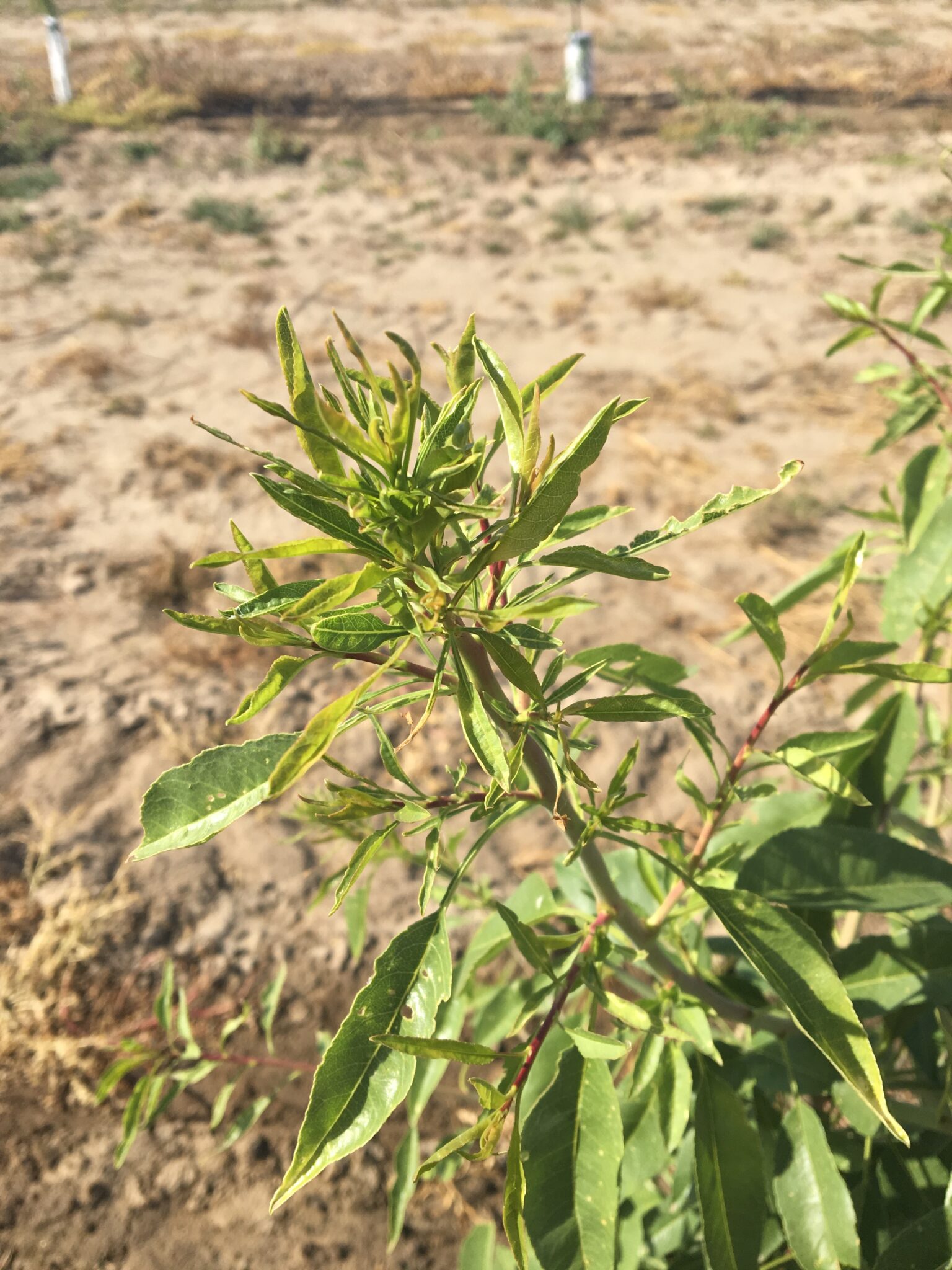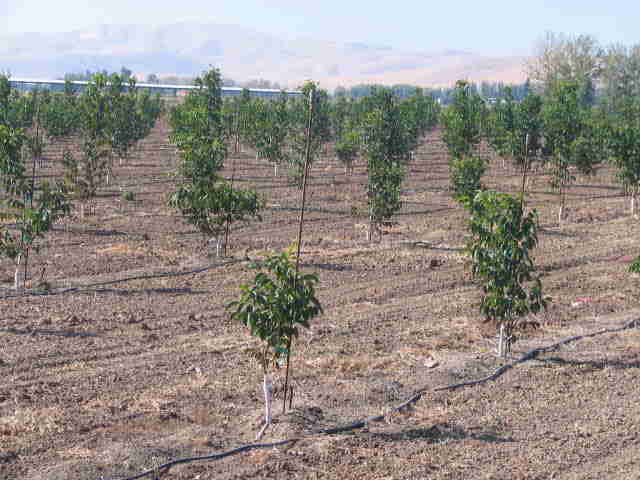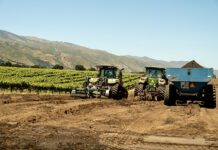
Sampling soil, leaves and water helps orchardists monitor changes in salinity, alerts them to nutrient deficiencies and, when soil sampling is done preplant, can prevent growers from planting a crop that may not perform well in a particular site.
In a UC-ANR webinar in October, Phoebe Gordon, a UCCE orchard systems advisor for Madera and Merced counties, shared information on the benefits of soil, leaf and water sampling, explained how and when to sample and provided information on how to read test results.
Tissue Tests for Nutrients
In general, Gordon said that she prefers leaf tests over soil tests to determine nutrient levels in plants, primarily because some nutrients such as nitrogen are mobile in soil, so getting a read on them can be difficult with a soil test.
“Plant tissue tests are best as a feedback for your nutrition program,” she said.
When sampling for a leaf tissue test, she advised growers to know the soil make up of an orchard.
“You want to know first what your orchard looks like,” she said. “If you have any wild variations in soil types, you need to know where those areas are.
“Assuming your orchard is uniform, you want to wander through it at random and select leaves from all four quadrants of a tree,” she continued. “Make sure those trees are at least 40 feet apart because there can be small variations in soil, and, if you are only selecting in one area, you are at risk of not getting an accurate picture of the entire orchard.”
Also, Gordon said, growers should avoid combining good and bad areas of an orchard. “Because we manage nutrition based on irrigation blocks, it is best to not combine irrigation blocks,” she said.
In general, leaf tissue analysis will show a range from deficient to optimum. If results are below optimum, plants are deficient in nutrients and growers may need to increase nutrient applications. If plants are above optimum, she said growers may need to pull back on nutrient applications, particularly if experiencing lower than expected yields.
For almonds, pistachios and walnuts, leaf tissue test standards are based on leaf samples taken in July, she said.
“Something to keep in mind,” she added, “is that many of these leaf tissue standards are set when the current crop is in development or mostly completed with development. So, you may not be able to adjust to the current season’s crop needs, but they will let you know how you need to approach fertilizer for next year’s crop.”
Gordon also said growers should take into account the appearance of an orchard when interpreting results. That can help determine that other issues are present that may need addressing. “If you have nutrient test results that look fine, but you have really poor vigor in your orchard, it may mean there is something else going on besides a nutrition deficiency,” she said.
Gordon also noted that plant nutrient status is not just a factor of fertilization. There are circumstances where plants have a hard time taking up nutrients, she said. Cold and wet soils, particularly early in the season, could lead to reduced nutrient uptake, as will compacted soils. And, she said, nutrient deficiency symptoms can look similar at times to herbicide damage.
“In almonds, glyphosate drift and zinc deficiency look very similar,” she said. “This is a case where a nutrient test can help you figure out what is going on.”
Soil Tests
A preplant soil test, Gordon said, is often critical to the long-term success of an operation, both in regard to rootstock and crop selection or, in some cases, to alert growers to issues that need addressing.
“There could be issues with salinity. There could be issues with boron. And plants are not equally tolerant to a lot of issues, so you want to make sure that you are putting a plant in the ground that is going to succeed because you are wasting money if you put in almonds, for example, in a high-salt ground,” she said.
She added that fixing issues prior to planting often is more efficient and effective than doing so after the fact. “If you do need to do something to fix soil issues, like maybe add gypsum to reduce salinity levels, you can more easily incorporate amendments into the soil during the soil preparation process,” she said.
When conducting soil tests, Gordon advised growers to pull eight to 10 samples from multiple areas in an orchard, mix them together and send one composite sample to a lab.
“If you do a really good job of mixing up the soil before sending it in, you are going to get a better-quality sample,” she said.
When doing a general soil sample, avoid the edges and middle of wetting patterns in orchards under micro-irrigation, Gordon said, and keep samples limited to the top 12 inches of soil, discarding any surface debris. If sampling for salinity, more extensive sampling may be needed, including pulling from the edges of the wetted patterns and deeper in the soil. And don’t combine soil from a well-performing area and soil from a poor-performing area, she said.
Similar to collecting leaf samples, growers should pull multiple subsamples of soil spread across an entire block, she said, and, if sampling a block larger than 40 acres or at a site with very different soil types, should divide it up and send in two or more samples.
In general, Gordon said there are two types of soil tests: a general soil fertility test, which is going to provide readings of things like pH, cations and micronutrients, and a saturate paste extract test, which has been specifically developed for evaluating salinity. The results will be different across tests and come with different units, which could be parts per million, which is a concentration of nutrients in soil, or milliequivalents, which takes an ion’s size and the strength of its charge into account and allows a comparison of the activity between different ions.
Standard nutrient sampling can be beneficial, because it can alert growers to problems that are popping up, Gordon said. “But if you have an extensive problem, you are probably going to need more extensive sampling,” she said.
Both the general fertility and saturated paste tests measure soil pH, which is the measure of the concentration of hydrogen ions in a solution and affects plant uptake of nutrients.
“[A soil pH measure] will tell you if you need to add something to raise the pH or add something to lower the pH,” Gordon said. “And it is helpful for deciding how you are going to add some micronutrients to your orchard.”
Nutrient availability can change as soil pH changes, she said. “There is a sweet spot, between 6 and 7.5, where most nutrients are most available,” she said. She added that at times it can be more productive to change a fertilization strategy than to try and adjust soil pH to increase the availability of a particular nutrient.
Water Tests
Getting water tested is another key step for maximizing crop production, she said. “This is critically important, because your soils are eventually going to look like what your water looks like. Especially if you have sodium, chloride and boron issues, you want to make sure you monitor this on a regular basis.”
When collecting water samples, Gordon advised growers to pull samples from every source they are using.
“So, that can be canal water, as well as wells, and if you have multiple wells, you want to look at those separately.” If pulling from a well, she added, it is important to let the well run for at least 30 minutes before pulling a sample.
“I know it can seem like a lot if you are turning in a ton of samples to a lab,” she said, “but it is important to remember, especially if you are working with plants that are really salt sensitive, that the better picture you have of what is going on at your site, the better decisions you are going to be able to make.”
















